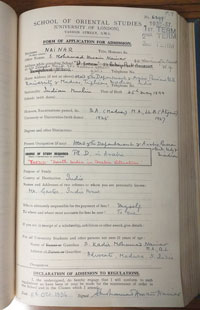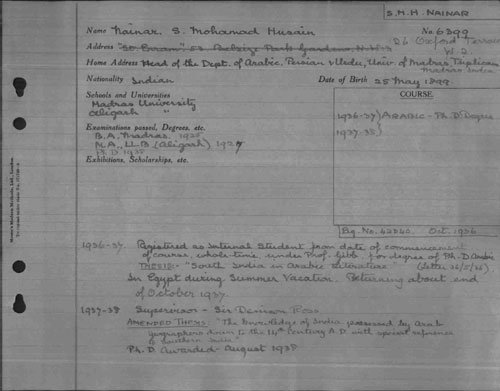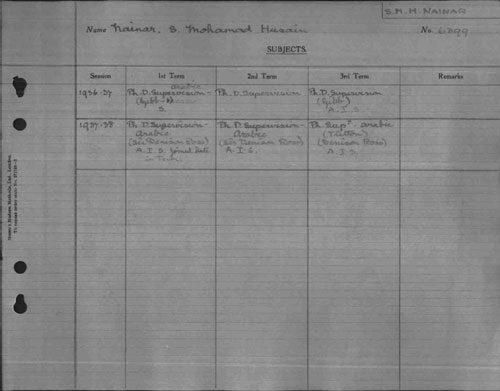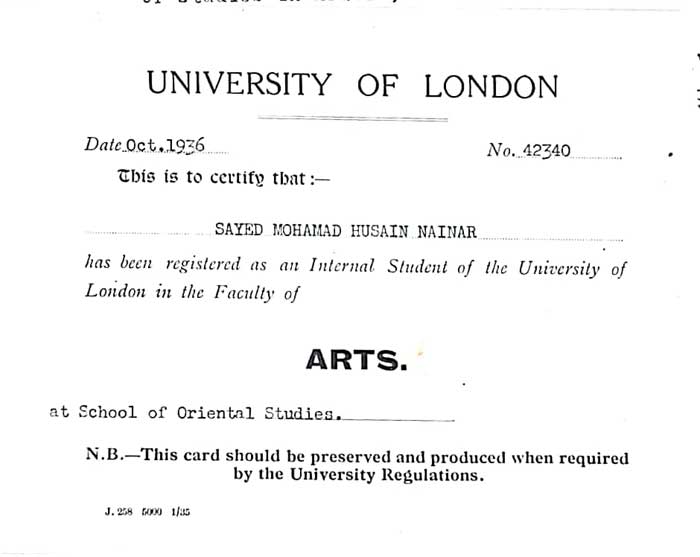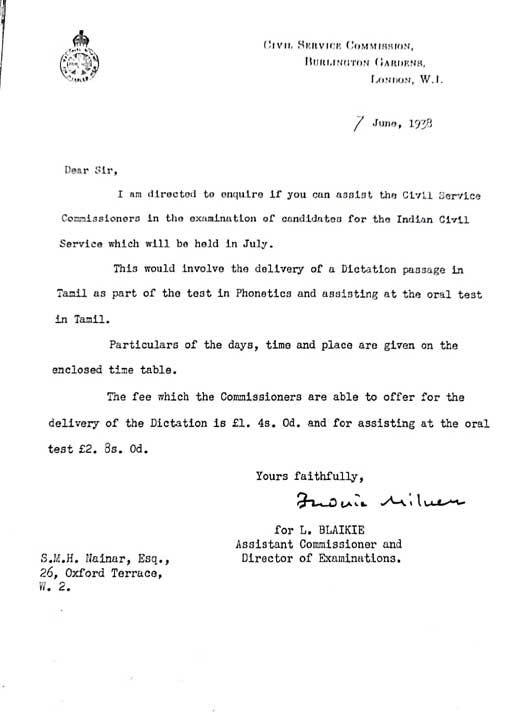A student abroad
In 1936, Hussain Nainar was sent by University of Madras to the School of Oriental Studies, London, to get trained in modern methods of research and also qualify himself for the Ph.D degree in the University of London.
Dr. Hussain did his doctoral study, titled Arab Geographers’ Knowledge of South India for the School of Oriental Studies, London University, and was based in Britain from 1936 to 1938 for this. Interestingly, he had also applied to the Oxford and Cambridge universities. The SOS (now known as School of Oriental and African Studies – SOAS), initially rejected his application because according to their rules, scholars had to spend two years in Britain pursuing Masters, before attempting D.Litt studies. Only their own scholars could attempt PhD without this rule.
Photo courtesy: SOAS Library, SOAS University of London
Taking a stand
Dr. Hussain wrote back to SOS authorities, showing his credentials as the head of a department that had at least 10 manuscripts in print under his guidance, and his previous research experience to show why this rule should not be applied to him.
In his letter to Professor H.A.R. Gibb, on November 9, 1935, he writes, “I am not a fresher from a college. I have put in eight years of service as a research scholar, and as a Head of a research department in the Madras University. I feel that it is not unfair to ask why my case should be distinguished from that of a raw graduate who would be given the privilege of taking the PhD in two years.”
Practical changes
According to information provided by Vanessa Bell, Corporate Records Manager and Archivist SOAS, University of London, Hussain Nainar had come at a time of big practical changes. “He arrived a few months after the school had left our first building in Finsbury Circus in March 1936 and the School moved to temporary lodgings in Vandon House in Westminster. I believe the building later became the Vandon House Hotel. Because this was meant to be a temporary situation (in the end it lasted almost 10 years because of the impact of the war on the occupation of our current building in Bloomsbury), no photographs were taken of the School or students at those premises,” she writes in an email.
However, the School was able to share Hussain Nainar’s SOS entry form and his index card, which record his details and his academic achievements.Eventually SOS accepted him as an ‘Internal Student’ of Arts, and considering his expertise in languages, and his own chosen subject, was exempted from taking the Matriculation examination in 1938.
Photo courtesy: SOAS Library, SOAS University of London
An opportunity to travel
Hussain Nainar stayed out of India for two years (1936-’38). This provided an opportunity to visit various centres of learning in England, Europe, Egypt and Turkey. He had to consult several manuscripts in the Bodleian Library, Oxford, in the State Library, Cairo, Egypt, and in the Bibliotheque Nationale, Paris.
He stayed in Oxford for about a month and for about three months in Paris to work on some manuscripts connected with the subject of his study, and about the same period in Cairo. From Cairo, he went by ship to Istanbul and stayed for six weeks in Turkey. He had also visited the Universities in Berlin and Bonn (Germany).
While in Britain, Dr. Hussain continued to work on manuscripts for the Madras University (as can be seen in correspondence between him and his colleagues). He worked as an evaluator for the Civil Service Commission, and tested candidates in Tamil language for Indian and Burma Civil Service Probationers’ examination in London, on June 7, 1938. He also set an Urdu paper for the College of Preceptors (established in 1846, and the oldest teaching association in UK).
Though no photographs (if they were taken), have survived from this period of his life, there is plenty of other memorabilia such as postcards, bills and ticket stubs and a passport issued by the British Empire in 1936, which trace his journey with the accuracy of satellite navigation. We are sharing a few of them here with you.

